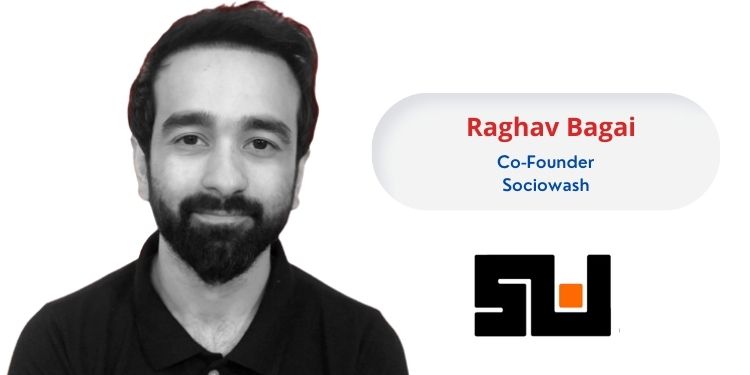Brands are rewriting the rulebook of marketing and advertising.
Driven, but not afraid to indulge. Opinionated, but empathetic. Casual, but not frivolous. The biggest cheerleaders are their audience. And the audience is the child of momentary culture, shaped by technology and the gifted attention span of a goldfish.
Not to forget, they take morning cups of coffee with memes.
Memes are now the crypto currency of content, some have cracked it, some are still confused but every single brand out there wants to try it!
Conventional advertising is on the back foot these days and memes have taken the spotlight. Not long ago, sharing memes became a trend on social media as people, especially Gen Z expressed their opinions on a range of issues with a pinch of humour.
Today, memes travel faster than light and it’s been scientifically proven (just kidding but it might soon). The impact is such that from cricketers to politicians, everyone is addicted and you will come across thousands just while casually scrolling.
From the picture of an angry Pakistani cricket fan to ‘Pawrihorahihai’ girl, not to forget the egg that surpassed Kylie Jenner’s post, brands used it all to connect with people, and they reaped its benefits too. Friendly social media banters via memes came as a new concept and took everyone in its frenzy.
What started as funny banter is now a full-blown marketing strategy. Brands come up with new meme templates specifically to promote an event, web show, or a new product.
From Mumbai Police’s awareness strategy to Tinder India bursting relationship myths, everyone is communicating via memes. The best part about it is that it’s simple, easy, and super cheap. The only thing you need is how to use it on point.
But how to use memes the right way, and is there even a right way for memes?
In meme marketing, context is what makes you click and content is what makes you stick.
It can be subtle or hard-hitting but should be guaranteed with humor. Brands are tapping more business opportunities keeping youngsters with spending potential in mind. This led to the rise of a new type of digital marketing called ‘meme marketing’. From trolling to friendly banters, memes became a language for everyone, be it Tinder, Zomato, Swiggy, and others.
If that’s not enough, a lot is getting invested on the campus ambassador network to create content by the youth, for the youth. This works wonderfully as the brand feels more personal and not like a giant company that doesn’t get what we want. The meme is the ultimate ice-breaker between the brand and the consumer .Social media platforms have roughly over 400 million users. A major chunk of this population is in India, using social media apps such as Instagram, Twitter, WhatsApp, etc. With data packs costing peanuts and smartphones available across every budget range, people, especially youngsters are spending more and more time on social media. Hence it became important for brands to utilize this new tool to convert people into potential customers.
It has become easy for brands to capture the attention of the targeted audiences on social media via meme marketing. Swiggy India is one such example, on Independence Day, Zomato’s marketing strategy stole the show with a quirky social media post “Sorry, we aren’t accepting orders anymore – India, 15th August 1947”. Simple yet so witty!
The strategy was smart but risky as well, many missed the context, but it paid off largely as the post got several retweets and shares across social media platforms and Zomato gained a brownie point. This is one such example of meme marketing and how brands are capitalizing on this strategy.
Zomato’s rival Swiggy has also taken meme marketing as a full-fledged language to tweet on offers, discounts, and more.
Dating app Tinder is highly active with memes as its user engagement is really high. This gives Tinder an edge over rival dating apps. Few witty memes and the brand got overnight popularity along with followers who can be prospective customers. That said, memes are still an underutilized tool, they have the potential to speak to their audience in the narrative they understand. Some brands lose the spark while heavily pushing their products into it. That’s a big turn-off for meme addicts.
The Pandemic has just added value to this marketing style. With more time indoors and phones being your only company, memes have become the bridge that connects brands to their targeted audience.
Moreover, comedy is the key approach these days, considering people’s appetite for such content is really high and a dynamic approach is needed to grasp the attention of this generation that wants everything instantly. Meme marketing is good at improving brand engagement. It helps them drive page engagement, build a community of audience, and improve branding.
So, be it Neeraj Chopra winning gold in Javelin throw, a sport not-much-known in India, or a gaffe from a politician, it takes seconds for memes to flood social media platforms. And brands have slowly learned the art of benefiting from it.
Scope of meme marketing
Meme marketing is still in a nascent stage and it is evolving with each passing day. Memes are easy and there are plenty of online meme creators brands can partner with to stay in the game.
But one word of caution: memes are not for everyone, they can be offensive. And it backfires in seconds, leading to trolling and embarrassment for brands, and it can risk it all but thinking safe never make you viral. Two sides to the same coin.
However, it is here for the long run so might as well get dip our feet into it till it lasts. Till then, don’t underestimate the power of a MEME.
Article is authored by Raghav Bagai, Co-Founder, Sociowash.
















